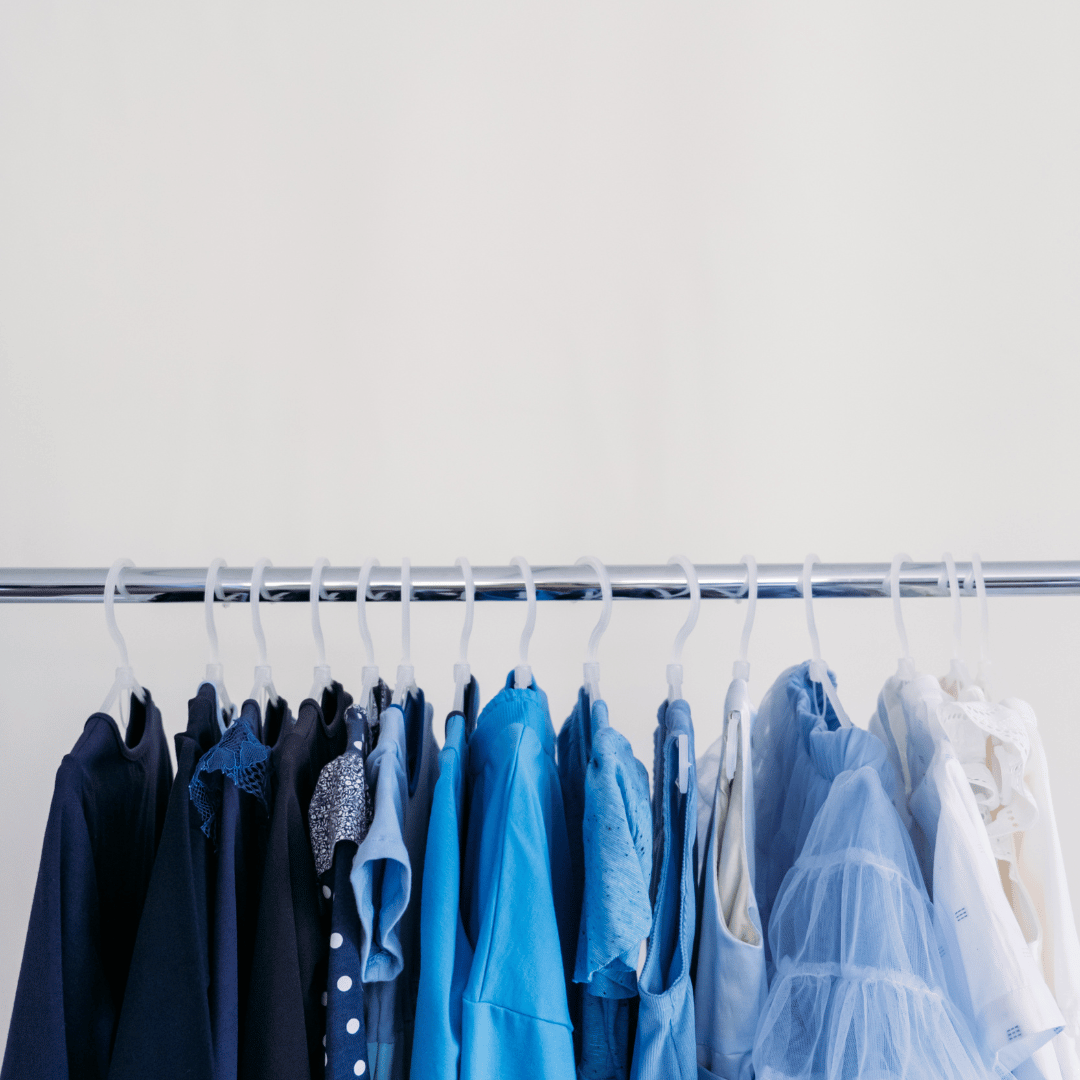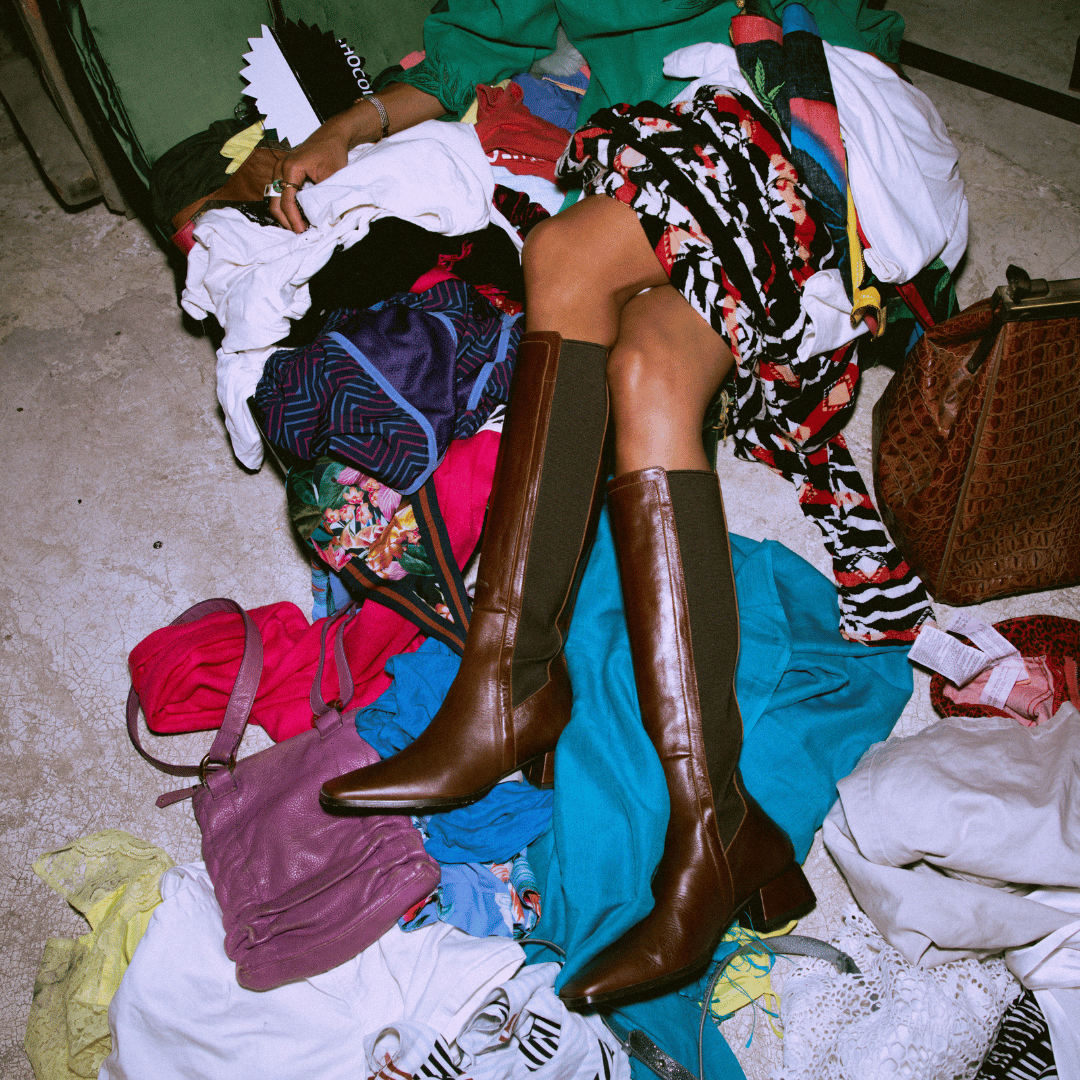- Clothes
- Bags
- Accessories
-
Inspiration
- Shoes
No Excuse: Shein’s Average Shopper CAN Afford Ethical Clothes

If you ask someone to guess who Shein’s average shopper is, most will picture a young Gen Z consumer (perhaps a student on a budget) who can only afford those cheap clothes and isn’t aware of their terrible environmental impact.
So, if that’s your best guess too, we don’t blame you.
Turns out, Shein’s average shopper can afford higher-quality clothes made ethically, and they are aware of the high hidden cost of cheap fast fashion garments.
They choose not to do anything about it!
Not everyone can afford to buy sustainable clothes…
While sustainable fashion isn’t about buying lots of eco-friendly garments (we’ll look into this soon), we can’t deny that being able to afford ethical clothes is often a privilege:
- Clothing poverty is real – Someone living from paycheck to paycheck hasn't got the means to pay €90 for a new garment right now, even if it’d last them for years
- Sustainable brands tend to be less size-inclusive – Unfortunately, this is because they have lower budgets and margins than fast fashion giants. If there isn’t enough demand to cover their higher upfront costs, they can’t afford to offer the same item in every single size. So, sadly, the most petite or plus-size consumers have more options when shopping from fast fashion brands
So, we're not saying everyone who buys clothes on Shein and other ultra-fast fashion stores could easily swap them for ethical alternatives.
… but Shein’s average shopper can! They just choose not to

Research conducted by UBS and based on 684 regular Shein consumers proved that this average shopper ISN’T who we thought. It’s not the struggling Gen Z student or minimum wage worker who’s unaware of fast fashion’s dreadful environmental impact.
On the contrary, Shein’s average shopper:
- Is a 34.7-year-old woman earning $65,300 a year
- Spends $100 on new clothes every month
- Buys more frequently than most consumers
- Values aesthetics more than comfort and sustainability
When you’re “old” enough to know better and earn over $60,000 a year, spending $100 on dozens of cheap throwaway clothes every month is a reckless but conscious CHOICE.
Why are so many consumers making it, though?
Shein’s shoppers are stuck in a cycle of continuous overconsumption

The psychology of fast fashion was bad enough with physical stores offering hundreds of new garments every week. Now, ultra-fast fashion brands like Shein have taken that to the extreme, uploading THOUSAND of even cheaper garments that follow temporary micro-trends… and the planet can’t cope with it.
The clothes sold by Shein and other fast fashion brands are:
- Made without taking the environment into consideration (for example, with cotton that’s full of pesticides or polyester which takes hundreds of years to decompose)
- Often produced in sweatshops by people (including children) trapped in modern slavery conditions
- Leading to 92 million TONNES of waste every year, the equivalent of a truck full of clothes being dumped into landfills every second
Not all Shein consumers are aware of this. Plenty of them are, though, but choose to ignore it.
Either way, here’s how ultra-fast fashion brands keep shoppers trapped in a vicious cycle:
- Shopping releases feel-good brain chemicals – Whenever you buy a new clothing item or get it delivered, you feel a pleasurable dopamine hit
- It’s even stronger with fast fashion clothes – Our brain’s pleasure centre gets activated more if we’re purchasing cheaper garments
- That “happiness” doesn’t last long – Sure, that dopamine hit feels good at first, but your excitement goes away within a day or less. After wearing that “new” item four times, it’ll start to feel like “just another old garment in your wardrobe”
- The cycle starts again – Since that “happiness” is short-lived, Shein consumers start looking for new clothes because their brain craves another dopamine hit. And another. And another one again
- Fast fashion brands are fuelling it – This overconsumption cycle is literally designed to keep us unhappy in the long run! Think about it: these companies wouldn’t make enough money if we felt confident and satisfied with what we have. So, their marketing pushes us to buy new clothes to fill a void, feel worthy, or belong. By promoting impersonal and ever-changing trends, they also remove our self-expression (no wonder you always get tired of those clothes: they don't feel “you”!)
How you can stop supporting Shein without breaking the bank
.jpg)
If you are the kind of Shein shopper spending $100 on new clothes every month (love you for reading this blogpost and we're happy to answer any questions you may have!), maybe you genuinely didn’t know about the environmental impact of your lifestyle or how those brands have been keeping you trapped. But now you do.
So, this is your chance to change it. How can you afford a sustainable wardrobe, though?
- Mindset shift – The solution isn’t to buy the same amount of clothes from sustainable brands. It’s to start from the clothes you already own (because THAT’s the most eco-friendly fashion), investing in fewer and higher-quality garments made ethically, and keeping them for years
- Focusing on cost per wear – Yes, ethical clothes tend to have higher price tags (because they involve eco-friendly fabrics and practices, and workers are paid fair wages). Since they’re made to last, though, their cost per wear is usually much lower, especially if you buy them consciously (= only clothes you can see yourself rewearing at least 30 times). For example, a €10 Shein dress you purchased on a whim and only worn twice? Its cost per wear is €5, and that’s without considering that you’ll probably buy a new one straight away. A €90 ethical dress matching your style and that you’ll happily rewear 30 times? Only €3!
- Looking for sustainable brands – We founded Project Cece to help eco-conscious consumers find ethical clothes easily. We literally brought hundreds of fair trade brands in one place and added filters (including price) to simplify your choices
Not everyone can afford new ethical clothes, but Shein’s average consumer can.
And since there are so many options to embrace sustainable fashion for the same (or even less) money, we're done excusing them.
Share our story
Related articles
How YOU Can Afford a Sustainable Wardrobe (& Save Money)
Ethical clothes cost more, but fast fashion latter is probably costing you a lot more money! So, here's how to afford a sustainable wardrobe [+ cheaper brands]
The Devil Wears… Ultra Fast Fashion. Do You?
Sweatshops, environmental damage, and a negative effect on young consumers’ mental health: meet ultra fast fashion and its sinful consequences.
How to Ditch Fast Fashion & Switch to Ethical Clothes: 10 Tips
Ready to take the first step towards a more sustainable wardrobe? Here are some practical tips to ditch fast fashion and discover ethical alternatives.
Project Cece is a platform that collects ethical fashion from vetted brands and shops in one place. Browse ethical fashion for women and men and find items that fit your style, budget and values!
_large.png)


